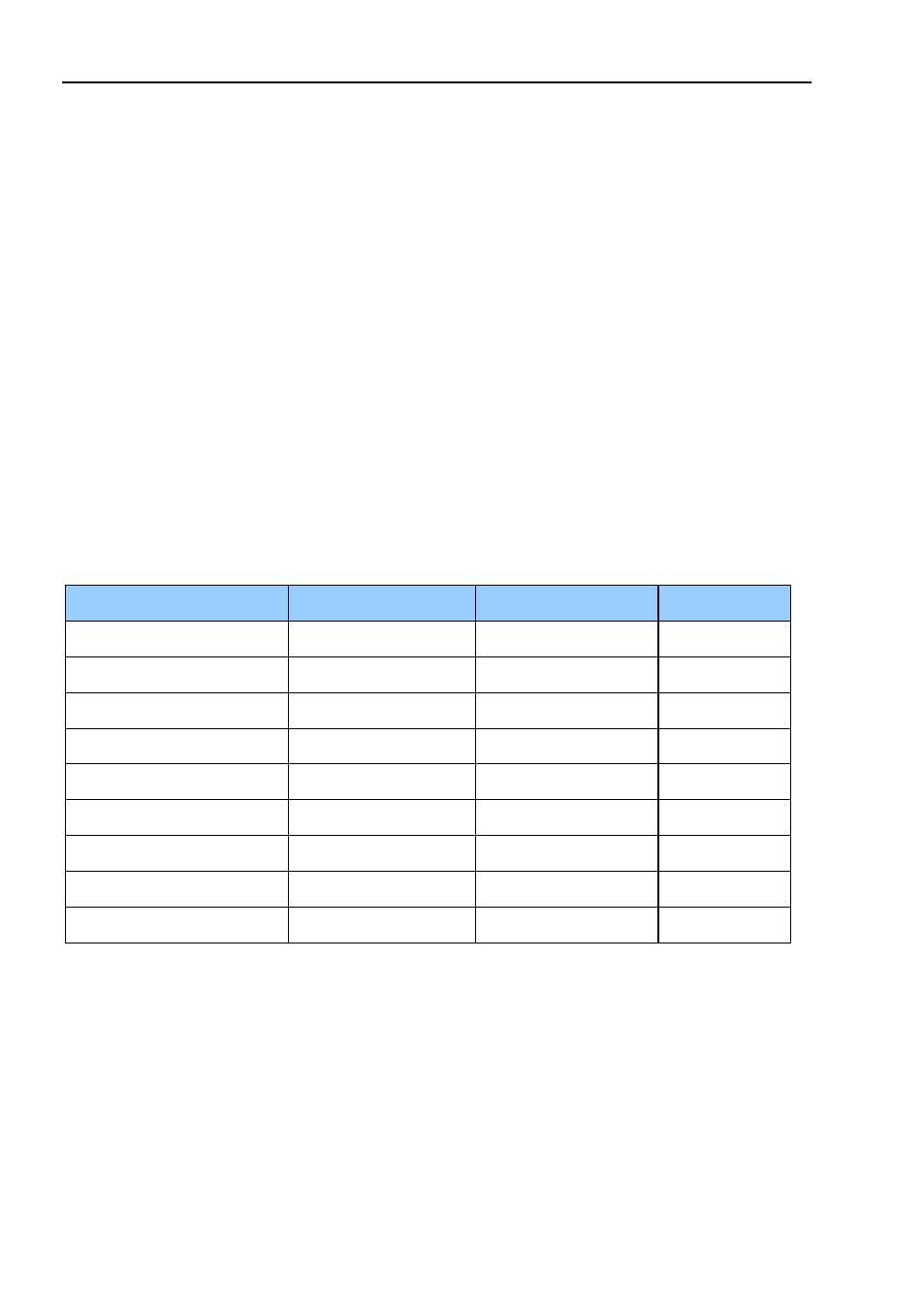2 application class definition, 3 standard signals, Application class definition – HEIDENHAIN PROFIBUS-DP (DPV2) User Manual
Page 38: Standard signals, Table 11

PROFIBUS IO data description
38
5.2 Application class definition
HEIDENHAIN´s PROFIBUS devices can be configured as class 3
or class 4 PROFIBUS DP device according to the encoder profile
v.4.1. Class 3 offers the basic functionality and Class 4 offers the
basic functionality and additional full scaling and preset
functionality.
CLASS 3
Device with base mode parameter access and limited
parameterization of the device functionality.
Isochronous mode is not supported.
CLASS 4
Device with scaling, preset and base-mode parameter
access. Isochronous mode is supported.
5.3 Standard signals
The table below describes the standard signals that are used to
configure the IO data.
Significance
Abbreviation
Length (Bits)
Data type
Velocity value A
NIST_A
16
Signed
Velocity value B
NIST_B
32
Signed
Control word
G1_STW
16
Unsigned
Status word
G1_ZSW
16
Unsigned
Position value 1
G1_XIST1
32
Unsigned
Position value 2
G1_XIST2
32
Unsigned
Position value 3
G1_XIST3
64
Unsigned
Control word 2
STW2_ENC
16
Unsigned
Status word 2
ZSW2_ENC
16
Unsigned
Table 11
Standard signals
